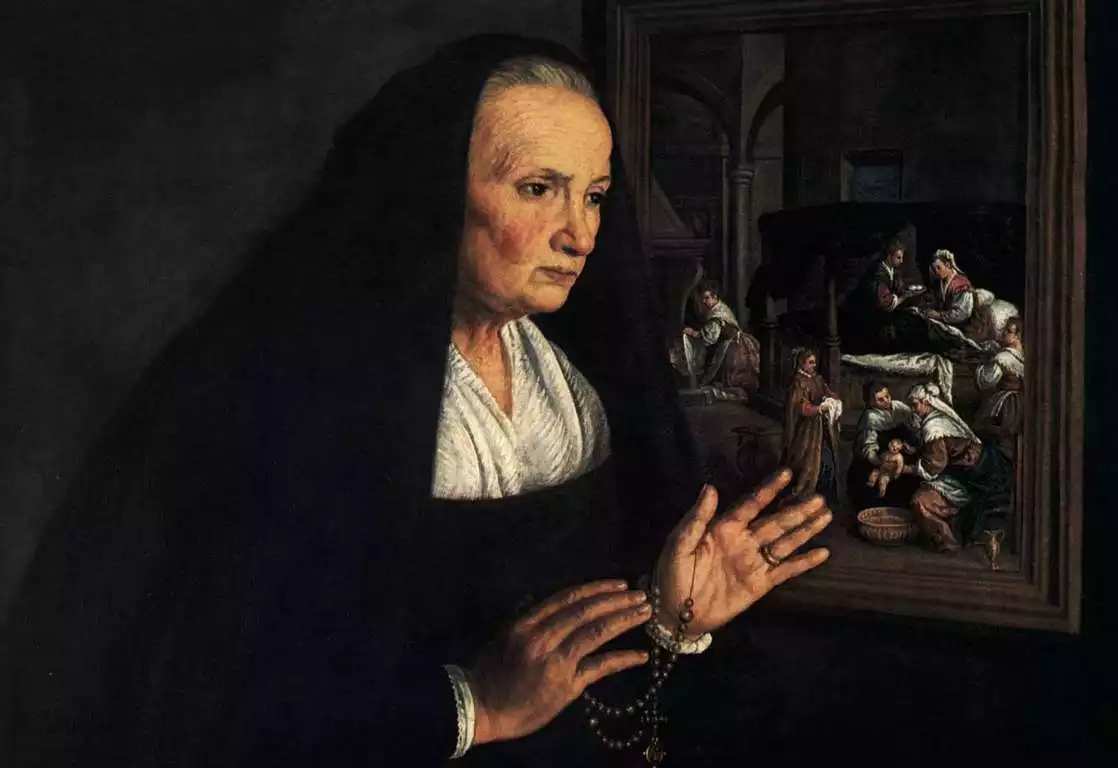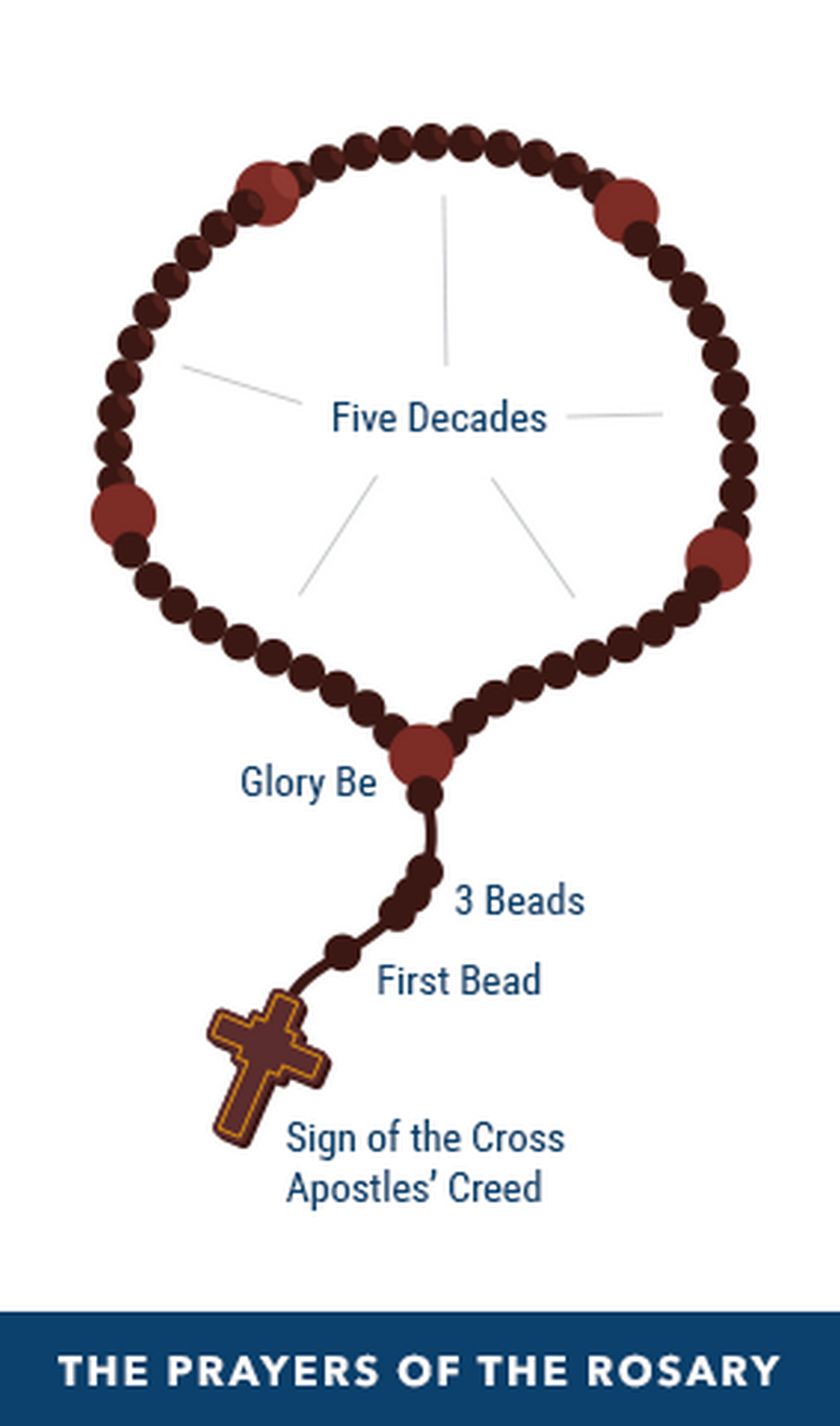
The Rosary, a revered tool in Christian devotion, is primarily associated with the Roman Catholic tradition. It serves as an instrument for meditative prayer, focusing on key events in the life of Jesus Christ and the Virgin Mary. The term ‘Rosary’ originates from the Latin ‘rosarium’, meaning ‘crown of roses.’ This metaphorical crown represents the series of prayers that compose the Rosary, with each prayer symbolizing a rose offered to Mary.
Historically, the Rosary’s roots can be traced back to the early Christian era, with the practice of reciting 150 Psalms. Those unable to read these Psalms often substituted them with simpler prayers. Over time, this evolved into the repetition of the Hail Mary prayer, structured around a set of beads to track the count. The modern form of the Rosary, with its current structure of mysteries and prayers, was gradually developed through the Middle Ages.
This evolution reflects the dynamic nature of Christian spiritual practices, adapting to the needs and capabilities of the faithful. The Rosary’s structure of the Joyful, Sorrowful, and Glorious Mysteries, later supplemented by the Luminous Mysteries by Pope John Paul II in 2002, guides the faithful through significant events in the life of Christ and Mary. Each mystery is contemplated upon while reciting a decade of Hail Marys, allowing for deep meditation and reflection.
The Rosary’s significance extends beyond individual devotion; it has played a notable role in Christian community and culture. It is often used in communal prayer settings, fostering a sense of unity and collective devotion among believers. This shared experience strengthens the communal bonds within the Church, making the Rosary a powerful tool for both personal and communal spiritual growth.
Furthermore, the Rosary has been attributed with miraculous interventions and is deeply interwoven with numerous Marian apparitions and devotions throughout history. Many saints and spiritual leaders have advocated the Rosary as a potent means of obtaining graces and as a spiritual weapon against evil. Its simplicity, accessibility, and profound depth make the Rosary a unique and enduring element of Christian spirituality.
The Rosary in Practice
The Rosary is composed of a sequence of prayers: the Apostles’ Creed, the Our Father, the Hail Mary, the Glory Be, and the Fatima Prayer. The prayers are divided into decades, each consisting of one Our Father, ten Hail Marys, and one Glory Be. The mysteries of the Rosary, which are meditated upon during these prayers, are categorized into four themes: Joyful, Sorrowful, Glorious, and Luminous Mysteries.
Each set of mysteries reflects different aspects of the life of Christ and the Virgin Mary. The Joyful Mysteries, for example, include the Annunciation and the Nativity, focusing on the joyful events in the life of Jesus and Mary. The Sorrowful Mysteries contemplate the Passion of Christ, while the Glorious Mysteries celebrate the Resurrection and other triumphant moments. The Luminous Mysteries, added by Pope John Paul II in 2002, reflect on the public ministry of Jesus.
In practice, the Rosary is not only a prayer but also a meditative exercise. As the faithful recite the prayers, they are encouraged to reflect deeply on the mysteries, contemplating their significance in the broader narrative of Christian salvation. This meditative aspect highlights the Rosary’s role in promoting spiritual reflection and connection with the divine.
The Rosary’s presence in the Bible is indirect. While the prayers and the practice itself are not explicitly mentioned, elements of the Rosary, such as the ‘Hail Mary’ which is derived from the angel Gabriel’s greeting to Mary in Luke 1:28, have biblical foundations.
Historical Evolution and Cultural Significance
The evolution of the Rosary reflects a rich tapestry of cultural and religious influences. From its origins as simple prayer beads, the Rosary has grown into a symbol of piety and devotion within Christianity. Its development is intertwined with various religious orders, most notably the Dominicans, who played a significant role in popularizing the Rosary in the Middle Ages.
The Rosary’s cultural significance extends beyond its religious function. It has been a source of inspiration in art, music, and literature, symbolizing devotion, contemplation, and the human search for meaning. Additionally, the Rosary has been influential in shaping historical events, particularly in Christian communities where it has often been turned to in times of crisis or need.
Theology Behind the Rosary
The Rosary, while a practice deeply rooted in Catholic tradition, embodies a theology that resonates across Christian denominations. At its core, the Rosary is a contemplative prayer that seeks to engage both the mind and the heart, guiding believers through a reflective journey of the key mysteries of the Christian faith.
Christocentric Nature
The central theological aspect of the Rosary is its Christocentric focus. Each mystery contemplated in the Rosary revolves around the life, death, and resurrection of Jesus Christ. From the Joyful Mysteries, which celebrate events such as the Annunciation and the Nativity, to the Sorrowful Mysteries that reflect on the Passion, and the Glorious Mysteries that rejoice in the Resurrection and Ascension, the Rosary is a journey through the Gospel narrative. This journey not only recalls these events but invites the faithful to enter into them, meditating on their significance for the salvation of humanity.
Marian Devotion
While the Rosary is Christ-centered, it is also deeply Marian in its orientation. The repeated recitation of the Hail Mary, a prayer derived from scriptural texts (Luke 1:28 and Luke 1:42), honors Mary’s role in the salvation history. Theological interpretations of the Rosary underscore Mary’s unique position as Theotokos (God-bearer) and her intercessory role. In the act of praying the Rosary, devotees are believed to be joining Mary in contemplating the life of Christ, thus deepening their understanding and love for Him through her perspective.
Meditative Practice
Theology of the Rosary also emphasizes its nature as a meditative practice. This form of prayer is not merely about vocal repetition but involves an active engagement of the mind and heart. It is an invitation to a contemplative pause in the midst of daily life, where one can reflect on the mysteries of faith and their personal implications. This meditative aspect is seen as a way to foster a deeper spiritual awareness and a more intimate relationship with God.
In conclusion, the theology behind the Rosary is multifaceted, intertwining Christocentric meditation, Marian devotion, and contemplative prayer. It offers a unique spiritual exercise that goes beyond mere recitation, inviting believers into a profound experience of the Christian mysteries. Through the Rosary, the faithful are called to reflect on the fundamental truths of their faith, drawing closer to the divine mystery at the heart of Christian belief.
Praying the Rosary
Familiarize yourself and/or your group with the prayers of the Rosary
- Make the Sign of the Cross.
- Holding the Crucifix, say the Apostles’ Creed.
- On the first bead, say an Our Father.
- Say one Hail Mary on each of the next three beads.
- Say the Glory Be
- For each of the five decades, announce the Mystery (perhaps followed by a brief reading from Scripture) then say the Our Father.
- While fingering each of the ten beads of the decade, next say ten Hail Marys while meditating on the Mystery. Then say a Glory Be.
(After finishing each decade, some say the following prayer requested by the Blessed Virgin Mary at Fatima: O my Jesus, forgive us our sins, save us from the fires of hell; lead all souls to Heaven, especially those who have most need of your mercy.) - After saying the five decades, say the Hail, Holy Queen, followed by this dialogue and prayer:
V. Pray for us, O holy Mother of God.
R. That we may be made worthy of the promises of Christ.
Let us pray: O God, whose Only Begotten Son, by his life, Death, and Resurrection, has purchased for us the rewards of eternal life, grant, we beseech thee, that while meditating on these mysteries of the most holy Rosary of the Blessed Virgin Mary, we may imitate what they contain and obtain what they promise, through the same Christ our Lord. Amen.
The Rosary remains a profound spiritual tool, aiding millions in finding peace, comfort, and a deeper connection to their faith. Its simple yet profound structure of prayers and meditations offers a pathway to contemplation and spiritual insight. As a living tradition, the Rosary continues to evolve, adapting to the needs of the faithful while retaining its core essence of meditative prayer.
References
- National Center for Biotechnology Information. “The Neurological and Psychological Effects of the Rosary and Mantram Prayer.” Accessed 23 December 2023.
- Thompson, Paul. “The Rosary: The Evolution of a Spiritual Practice.” HarperOne, 2009.
- University of Dayton. “Popes on the Rosary.” Accessed 23 December 2023.
- United States Conference of Catholic Bishops. “How to Pray the Rosary.” Accessed 23 December 2023.
- Williams, Mary. The Rosary and Christian Tradition.” Routledge, 2014.

